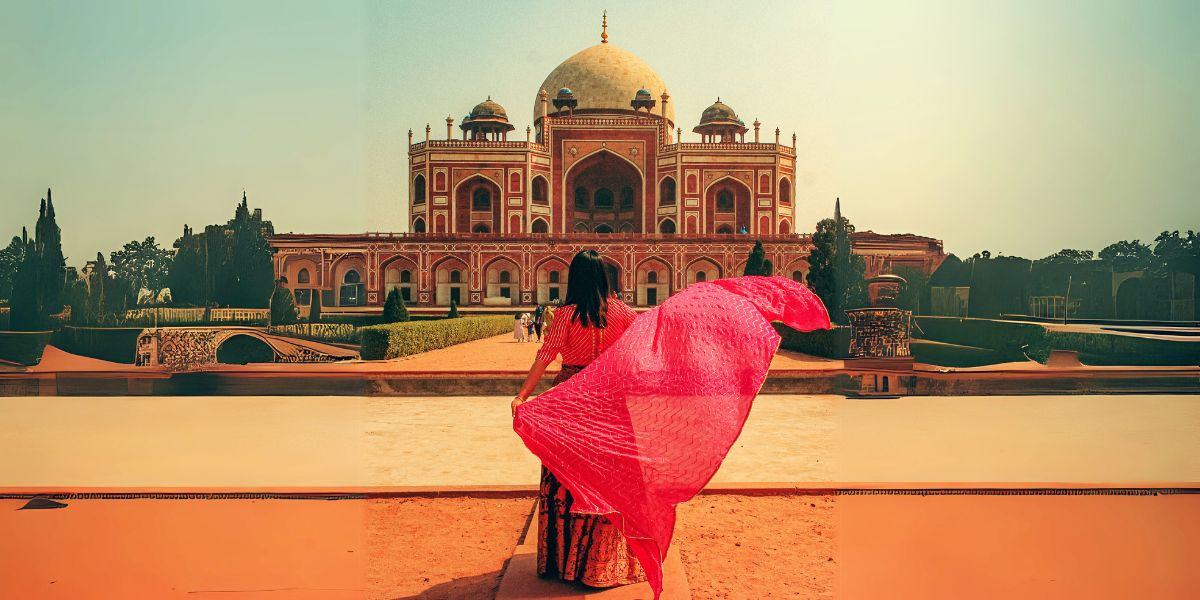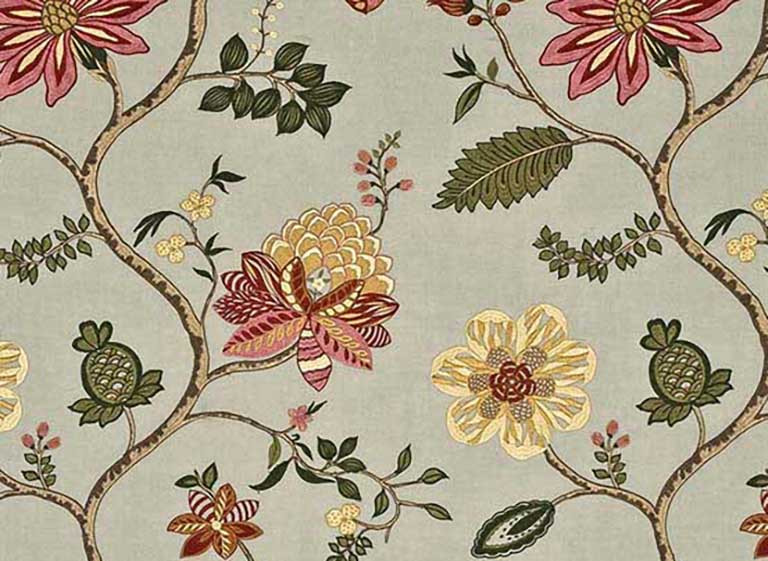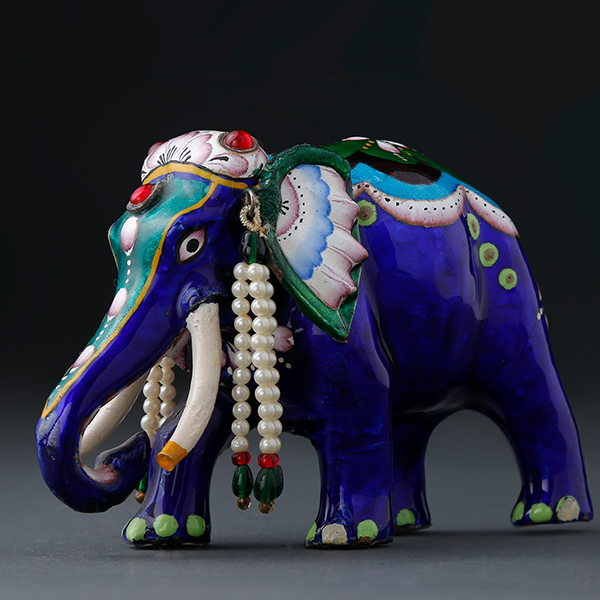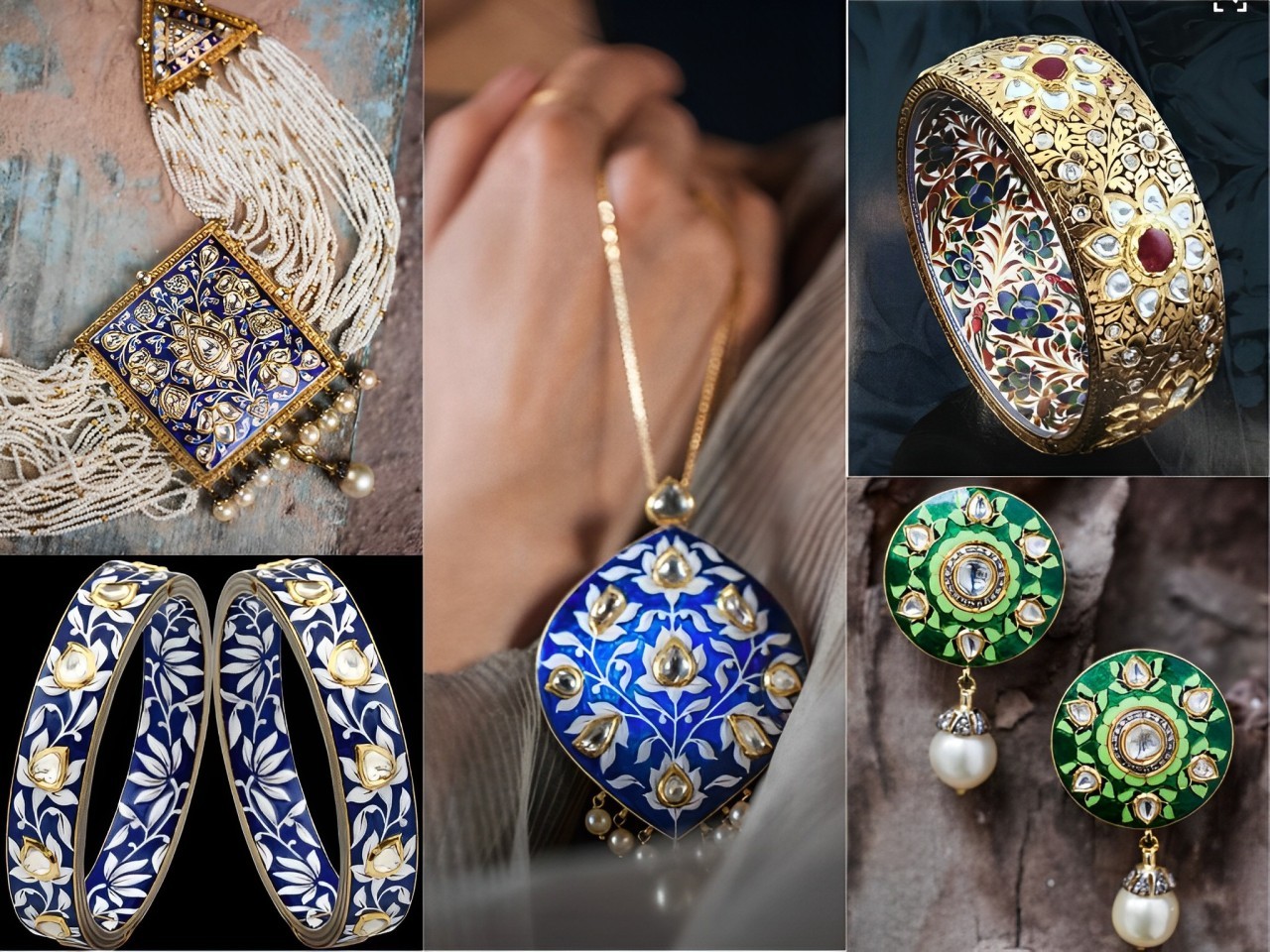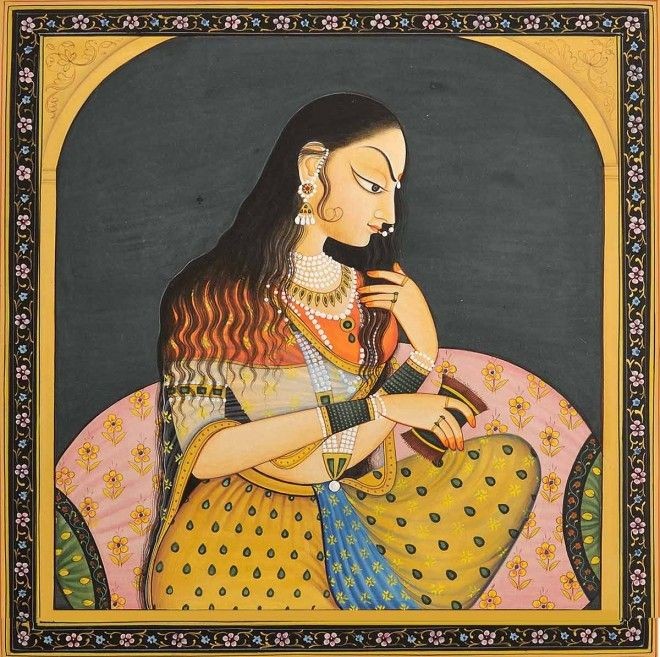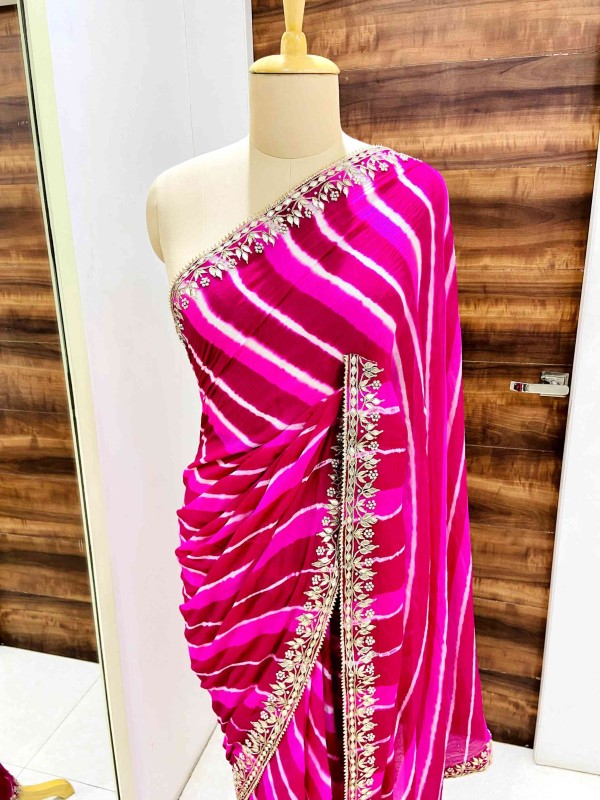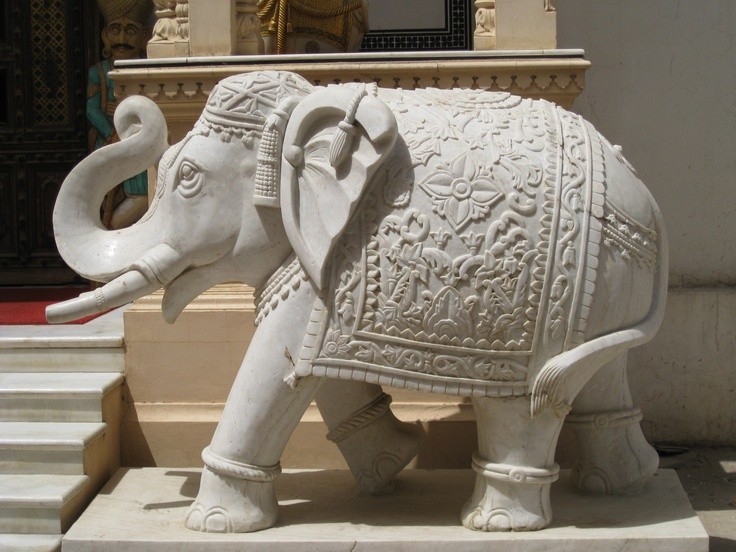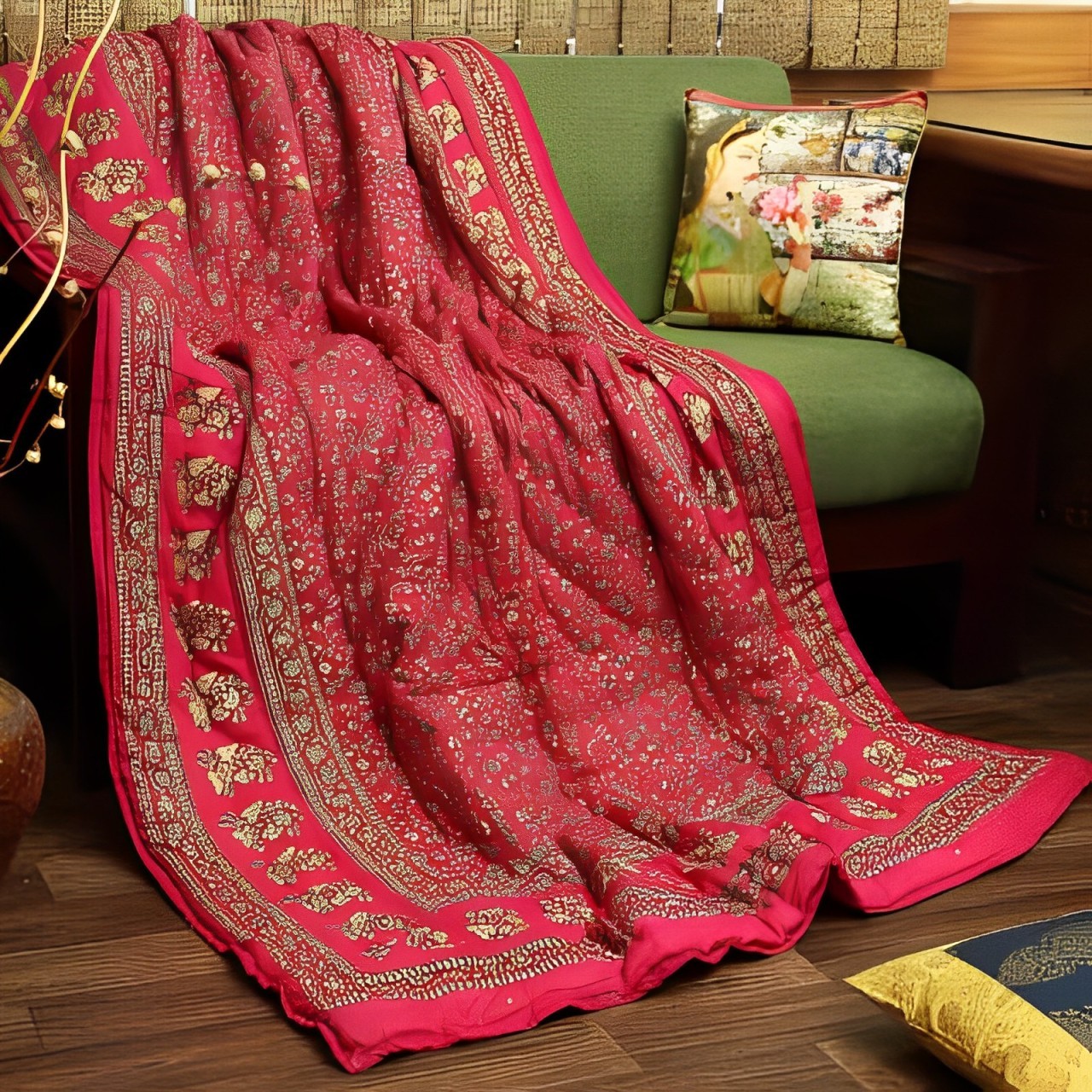Jaipur Puppet
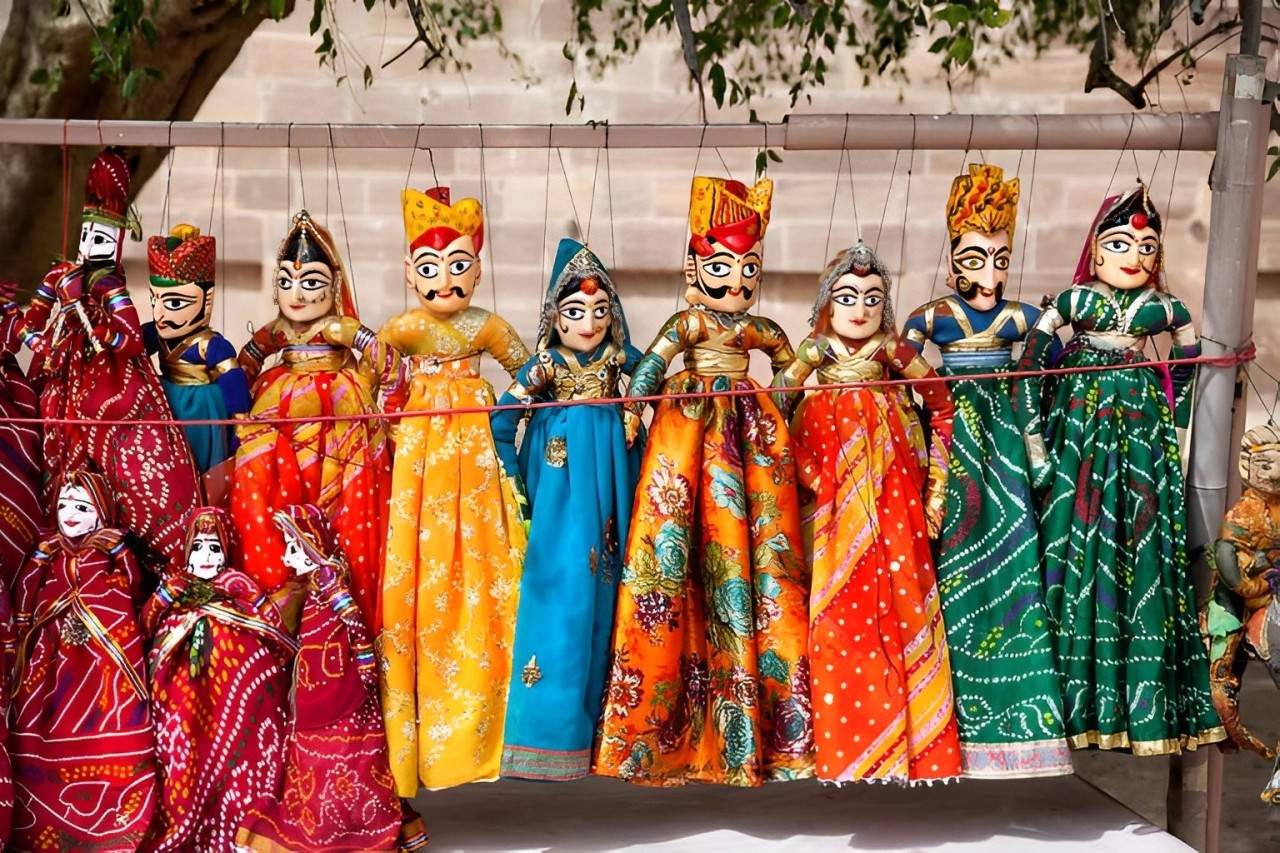
A puppet is an object, often resembling a human, animal or mythical figure, that is animated or manipulated by a person called a puppeteer. The puppeteer buses movements of their hands, arms, or control devices such as rods or strings to move the body, head, limbs, and in some cases the mouth and eyes of the puppet. The puppeteer often speaks in the voice of the character of the puppet, and then synchronizes the movements of the puppet's mouth with this spoken part. The actions, gestures and spoken parts acted out by the puppeteer with the puppet are typically used in storytelling. Puppetry is a very ancient form of theatre which dates back to the 5th century BC in Ancient Greece. There are many different varieties of puppets, and they are made from a wide range of materials, depending on their form and intended use. They range from very simple in construction and operation to very complex.
Origins:
Puppetry was practiced in Ancient Greece and the oldest written records of puppetry can be found in the works of Herodotus and Xenophon, dating from the 5th century BC. The Greek word translated as "puppet" is "νευρόσπαστος" (nevrospastos), which literally means "drawn by strings, string-pulling", from "νεῦρον" (nevron), meaning either "sinew, tendon, muscle, string", or "wire", and "σπάω" (spaō), meaning "draw, pull".
Aristotle (384–322 BC) discusses puppets in his work On the Motion of Animals.
The movements of animals may be compared with those of automatic puppets, which are set going on the occasion of a tiny movement; the levers are released, and strike the twisted strings against one another.
In India, puppetry was practiced from ancient times and is known by different names in different parts of the country. Excavation of clay dolls from Indus valley sites serve as an indication. The art of puppetry called Bommalattam is mentioned in Tamil literature Silappadikaram, which is written around 2nd century BC.
Introduction of Rajasthani Puppets:
Kathputli is a string puppet performance and is an ancient and well-known form of folk entertainment. A Kathputli basically means a puppet made of wood. Kathputli dance and performance is one of the major tourist attractions of Rajasthan. The string puppets of Rajasthan are famous as kathputhlis in the local language and the main centres where they are prepared are Jaipur and Jodhpur. The Bhatt community makes these puppets as well as performs with them from village to village during the dry season when cultivation is not possible.
The puppets are usually two feet in height having a wooden head with a huge nose and large eyes. The rest of the body is prepared of colourful and bright pieces of cloth and stuffed clothes which also allow for free movement. Unless they are horse riders, the puppets have no legs but are covered with a long pleated skirt. The puppet has a long thread for the head which reaches the manipulator and then joins the middle";" the threads from the two hands of the puppet are tied to the hands of the manipulator.
The costumes are regional and traditional while the themes that are performed turn around Rajasthani historical tales or local traditions. A few characters and items like the court dancer, stunt horse rider, and snake charmer, are a necessary. The puppeteers who make these puppets and perform with them belong to the traveling Bhatt communities who have been performing for thousands of years.
These string puppets are generally prepared from mango wood and are without hands and legs. Long Skirts cover the lower half of the puppet and is not attached to the strings. The hands are filled with cloth and cotton. The wooden face is hand painted with large eyes and other decorations are added to the face and the neck. While the upper portion of the female puppet is dressed in the choli and odhni, the male puppets are dresses in achkan and long kurtas, taking motivation from the Rajput Dressing Style. The vivid colors- green, orange, blue, and yellow- add to the attraction and inducement of the kathputli dance. These colorful puppets can be seen on all tourist destinations and be used as ornamental pieces to decorate your houses. They are cost effective and make excellent gifts.
Etymology of Kathputlis of Rajasthan:
The amalgamation of two colloquial terms forms the term Kathputli. ‘Kath’ means wood, and ‘Putli’ means doll. Together they define wooden dolls. The Kathputlis colloquial name also adds to its charm.
Puppet Shows:
Puppetry is a very old and popular form of folk entertainment. India has a mixed and rich heritage in puppetry. Puppetry is considered as the most significant of all dramatic forms. In India, puppet troupes are found in states like Rajasthan, Andhra Pradesh, Maharashtra, Kerala and Karnataka. The paper puppets and string puppets are famous in Rajasthan. Andhra Pradesh is well-known for Shadow puppets. Working the edge between entertainment and education, puppets can both teach and persuade Puppets have been a flexible means of communication artistic expression, and instruction for 2,000 years. Their innovative potential is just waiting to be used to help communities grow and change.
There are different types of puppetry shows in India. Some are glove puppets, some are rod puppets, some puppetry shows use string and rod puppets and last but not the least is the shadow puppets. Puppetry is more famous as a rural folk art than it is in urban areas however nowadays puppetry is getting its due appreciation in the cities too. Puppetry shows generally show different episodes from the well-known Indian epics of The Ramayana and The Mahabharata. Since puppets are characters and not people puppet shows can be used to extend social message on responsive issues like family planning, and female literacy.
Medium of Entertain and Education:
Puppets can work the edge between entertainment and information. They line up along with drama, drumming, storytelling, and dance as art forms that can also teach and persuade. The entertainment comes first. It draws us in, and once we have lost ourselves in the world the puppets create, we accept the message without even realizing that we are learning. Lessons learned in this way are more likely to learn and remember and it becomes part of knowledge. Puppets are equally at home in cities and villages. They can perform in the street or in local theatres and convey messages on immunization, sanitation or nutrition with humour and style.
Puppet shows are among the most effective means of communicating health messages, Puppet research in India confirms this thing. The puppets are becoming more successful in country after country as puppeteers are discovering new messages and new audiences. Those who join hands with puppets today are signing up with a winning and fast-growing universal movement.
Puppetry in Rajasthan:
The puppets in Rajasthan are one of the well-known sources of amusement in the state. The art of puppetry is practiced by a society of agricultural laborers of Rajasthan. Known as the Bhats, these people have been connected with Rajasthani string puppetry to carry forward their traditional profession. Originally they belong, to the Nagaur area in the Marwar region, they travel all over the country to show their talent. Also known by the name of the "kathputliwalas", they usually perform the puppet shows during the late evenings.
There are a number of wooden dummy dolls in the puppet shows that are dressed up in bright and color clothes. These puppets are attached with strings that the puppeteer uses to move them around. A small stage is set up with the help of a small bed that is laid by length. The puppeteer turns his puppets over a line attached to the upper legs of the beds. The beds are enclosed with sheets in order to hide the puppeteer from the view of the public. He moves the jointed arms of the puppets with the help of strings connected to each of them.
A small stage is set for the show where puppeteers show puppetry & tell the story. In the presentation, music or narrative song plays a vital role as the whole performance is based upon the narrative song. The puppets are fixed on stage. It describes historic stories, replay tales of love, and contain much shouting and high-pitched sound as the puppet turn around circularly and move excitedly at the time of performance.
Sometimes, the puppeteer makes use of different sound effects to attain the actuality impact & give a worth amusement. The puppeteer shows all his skills to make puppets dance on his tunes. Loud beats on the dholak (a kind of drum) declare the starting of the puppet show. There is shouting and whistling by the puppeteers throughout the show. The shows, generally lasts for about one hour.The Puppet show are enjoyed by people belonging to all the age groups. The show of Kathputli of Rajasthan is performed during fairs and festival occasions.
History:
Some scholars believe Kathputli art tradition is more than thousands of years old. One finds its reference in Rajasthani folk tales, ballads and sometimes even in folk songs. Similar puppets which are rod-puppets, are also found in west Bengal. But it is truly Rajasthan’s amazing kathputli which made India one of the first countries to invent its traditional puppetry. Tribes of Rajasthan have been performing this art from the ancient times and it has become an eternal part of Rajasthani culture diversity and tradition. No village fair no religious festival and no social gathering in Rajasthan can be complete without the Kathputlis. It is believed that somewhere 1500 years ago, tribal Rajasthani Bhat community started the use of Kathputli as string marionette art and it is in their love for tradition that art of Kathputli survived the test of time.
Tradition of Kathputli is based on folk tales and stories. Scholars believe that folk tales convey the lifestyle of ancient Rajasthani tribal people and Kathputli art might have originated from present day Nagaur and surrounding areas. Rajasthani Kings and nobles were patrons of Art and Craft and they encouraged the craftsmen in activities ranging from wood and marble carving to weaving, pottery, painting and jewellery.
Over the last 500 years, Kathputli was a system of patronage supported by kings and well-off families. The patrons would look after the artists in return for the artists singing praises of the patrons’ ancestors. Bhat community claim that their ancestors had performed for royal families, and received great honour and prestige from the rulers of Rajasthan.
Today Kathputli art is one of the most popular performing arts of Rajasthan state of India after Ghoomar. Organisations like Rupayan Sansthan in Jodhpur founded by Vijaydan Detha and Komal Kothari in 1960 and Bharatiya Lok Kala Mandal, Udaipur, founded by Devilal Samar in 1952, are working in the field preserving and promoting the art of Kathputli, the latter even has a puppet theatre as well as puppet museum. Capital New Delhi also has an area known as 'Kathputli Colony', in Shadipur Depot, where puppeteers, magicians, acrobats, dancers and musicians and other itinerant performance groups have settled for half a century.
Themes of the Kathputli Shows:
Given the Royals and Nobles’ favour, the themes of the shows were usually about the aristocrats. There are epic themes of the great deeds of the kings and their ancestors. Some even had praises of the then-present royals; the pieces had an illustrious touch.
The performances also have themes of the tradition of the tribal community and their lifestyle. Ordinary folks also enjoy these shows because of characters like snake charmers, peasants, and other everyday characters relatable to them. Daily anecdotes of rural life are also enjoyable to the audiences.
The ‘Kathputli waalas’, the puppeteers of the Bhat community, were agricultural labours. The people viewed their representation of the struggle to survive their art with genuine interest across the social scale. Even today, Kathputli performances in the nook and corners of Rajasthan have stories ranging from Royalties to ordinary peasants, and people enjoy the shows because of their rich cultural context.
Structure of Kathputlis of Rajasthan:
In the light of its etymological origin, Kathputlis are wooden dancing dolls. They are usually within a height range of 1.5 to 2 feet. But it is not just the wooden structure that makes Kathputlis such a famous doll. A lot of craftsmanship goes into the making of beauty.
The most important aspect of making the Kathputlis is attaching the strings in the right places. The strings are a vital part of the marionette Kathputlis. It allows the puppeteer to control the movements of the dolls during the performance. The length of the string is quite long. Even the quality of the string is essential. The string needs to have good strength to not break in the middle of a show. The strings are attached after the doll is ready.
The dolls, as characters of common or royal men, have legs. Dolls representing common or royal women do not have any legs in their structure. Depending on what other character the beauty is, a horse rider or a snake charmer, the craftsmen make the rest of the body accordingly. Over the wooden frame of the upper body, it is stuffed with cotton to help define it. The rest is taken care of by the clothing and accessories of the doll.
Features of Rajasthan Kathputlis:
The wooden structure of the doll undergoes a lot of detailed processing. Features like the eyes, nose, and mouth are carved out with extra attention. The Kathputlis have distinguishing big eyes and noses. The puppet makers carve the eyes and nose with their hands. They also need to ensure that the surface is smooth for later painting the details on them. If the doll is a man, a big black moustache is quintessential to complete the traditional look.
Cloths of Rajasthan Kathputlis:
To cover the frame of the wooden structure, the dolls wear colourful dresses. Apart from the gender normative dress style, a lehenga for women and dhoti for men, all the dolls are in bright clothes. The dolls of the Rajasthan wear traditional clothes, bandhani and sequential attire. In vibrant red, yellow, orange, blue, and others, the dolls can catch your eyes from a distance.
Accessories of Rajasthan Kathputlis:
In the traditional Rajasthani attire, there are certain accessories to pair with their dresses. In the case of a woman, a dupatta, heavy pieces of jewellery, and big bangles are common while for a man, a colourful Rajasthani turban and traditional chappals, mojaris, are necessary.
The Kathputlis, according to their gender, are given the requisite accessories. Depending on the character the doll plays, an accompanying horse or pungi is attached to the figure. A horse defines the doll to be a warrior. A pungi, a wind instrument, describes the doll as a snake charmer.
Music of Rajasthan Kathputlis:
A traditional folk tale is not complete without any traditional music. The Kathputli shows represent the authentic tribal community or in honour of the artisans’ patrons. Rajasthani folk music and instruments are a common accompaniment during the performances.
The puppeteers sing aloud the songs and their accompanying artists give the up-beat rhythm of the music. A dholak and a reed-like bamboo instrument are the minimalists yet defining accompaniments of the performances.
In contemporary times, the Kathputli shows are a symbol of the heritage of culture and tradition. At one time, the performances were an essential feature of every social gathering. Now it is a part of a local tour across the state of Rajasthan.
Artisans of the present time, descendants of the original Kathputliwaala community, try to keep the tradition of these dolls alive. Tourists who visit the state of Rajasthan usually bring back a pair of Kathputli, a man and woman, as a souvenir of the state. More than as a part of a live performance, the dolls are also objects of home décor. At present, the dolls are produced in bulk in the cities of Jodhpur and Udaipur, where the performances are still a part of daily life.
Despite the changing time and introduction of other forms of arts, Kathputlis are a part of the traditional culture of Rajasthan, like the Ghoomar dance of the state. The rustic qualities of the Kathputlis of Rajasthan make it famous worldwide.

